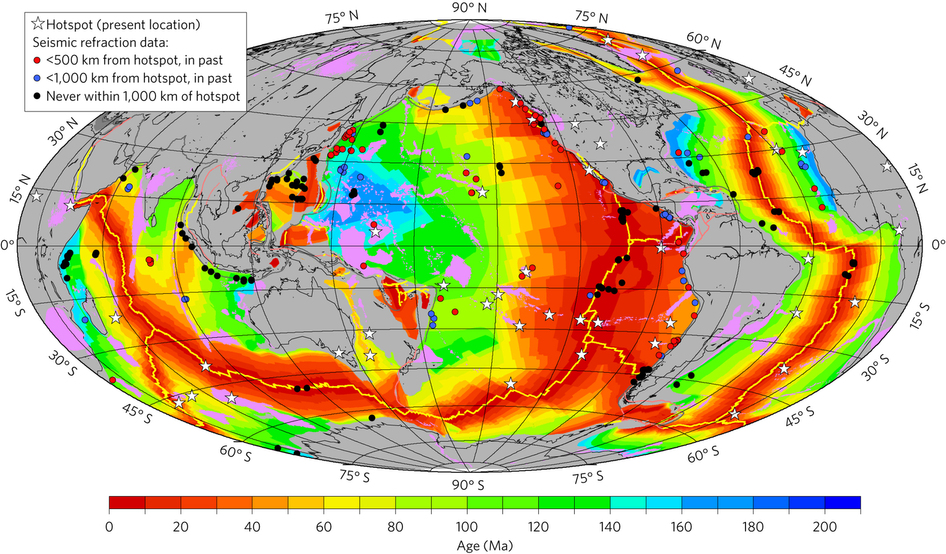Breakup of Pangea Cooled Mantle and Thinned Crust
November 20, 2017

The oceanic crust produced by the Earth today is significantly thinner than crust made 170 million years ago during the time of the supercontinent Pangea.
The thinning is related to the cooling of Earth’s interior prompted by the splitting of the supercontinent Pangea, which broke up into the continents that we have today, said Harm Van Avendonk, the lead author of the study and a senior research scientist at the University of Texas Institute for Geophysics (UTIG).
The findings were published in Nature Geosciences in December 2016.
“What we think is happening is that the supercontinent was like an insulating blanket,” Van Avendonk said. “So when these continents started opening up and the deeper mantle was exposed, more or less, to the atmosphere and the ocean, it started
cooling much faster.”
The research started when Van Avendonk and Ph.D. student Jennifer Harding, a study co-author, noticed an unexpected trend when studying existing data from young and old seafloor. They analyzed 234 measurements of crustal thickness from around the world and found that, on a global scale, the oldest ocean crust examined — 170 million year old rock created in the Jurassic — is about one mile thicker than the crust that’s being produced today.
The link between crust thickness and age prompted two possible explanations, both related to the fact that hotter mantle tends to make more magma: Mantle hot spots— highly volcanic regions, such as the Hawaiian Islands and Iceland — could have thickened the old crust by covering it in layers of lava at a later time; or the mantle was hotter in the Jurassic than it is now.
Van Avendonk mentioned this problem during a casual conversation with Joshua “Bud” Davis, a Ph.D. student in UTIG’s plate tectonics research group and co-author, who said that the group could investigate both of the explanations using computer models of plate movement since the Jurassic and a global database of hotspots.
The analysis ruled out the hot spot theory — thick layers of old crust formed just as easily at distances greater than 600 miles from hotspots, a distance that the researchers judged was outside the influence of the hotspots. In contrast, the analysis supported the hypothesis of mantle heating during the age of Pangea, and mantle cooling after the breakup of the supercontinent.
Back to the Newsletter